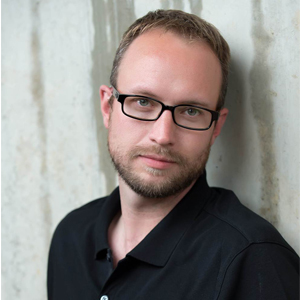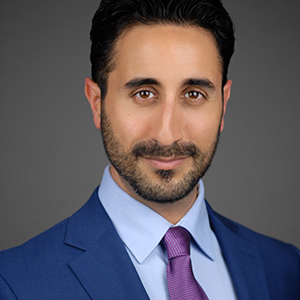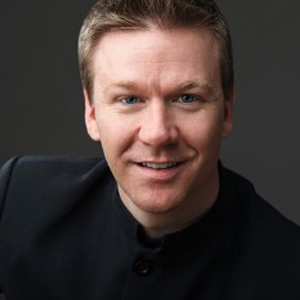
Conducting
What Makes San Diego State University Unique
The School of Music and Dance at San Diego State University features a conducting faculty of nationally recognized artist-teachers. Conducting students at SMD receive myriad opportunities to collaborate with SMD large and small ensembles, chamber ensembles, orchestras, bands, choirs, and other ad-hoc ensembles. Conducting students in SMD enjoy weekly private lessons, as well as ample podium time with SMD ensembles under the guidance of their major teacher. Students will have the opportunity during their time at SMD to conduct in concert both on campus and in venues across the city of San Diego.
Podium Time
Students in the Conducting M.M. and A.D. programs will have the opportunity to conduct one or more major SMD ensembles during their time of study at SMD. In consultation with faculty, students will gain practical experience in programming, recruitment, and program administration. In the final year of study, M.M and A.D. students will have the opportunity to engage in a capstone entrepreneurial recital experience in which they will be responsible for all aspects of producing a concert either on or off campus.
Experiential Learning Process
Learning by doing, through real-life experience, is the best way to learn and retain valuable information as a budding young conductor. All graduate students will focus on gesture, movement, score study and analysis, rehearsal techniques, literature, programming, logistics and administrative aspects, and advocacy. In addition, choral conducting students will focus on warm-ups, group vocal pedagogy, and lyric/diction.
Additional Resources


Arian Khaefi
Associate ProfessorDirector of Choral Studies[email protected]MU 225

Dr. Shannon Kitelinger
Professor of MusicDirector of Bands[email protected]MU 224
Round 1: Electronic Submission and Graduate Application
STEP 1: Email the following materials by January 10 to Dr. Arian Khaefi - [email protected]
- Statement of intent
- Current resume
- List of repertoire studied or conducted
- Conducting video(s): 15-20 minutes in length. Tracks should include date, name of ensemble or institution if applicable, and title of repertoire. Camera should be facing the conductor. Video must include both rehearsal and performance.
STEP 2: Apply to the California State University System by January 10 using the link from our Graduate Admissions along with letters of recommendation, transcripts, and other requirements
Round 2: Live Audition
Applicants will be notified of advancement to the 2nd round no later than January 20. The audition will consist of:
- Conduct through audition repertoire in mock lesson
- Sing a prepared solo piece in any language (aria, art song, or folk song)
- Play a prepared solo piece on piano
- Musicianship assessment
- Conducting the SDSU Chamber Choir in rehearsal
Round 1: Electronic Submission and Graduate Application
STEP 1: Email the following materials by January 10 to Prof. Michael Gerdes - [email protected]
- Statement of intent
- Current resume
- Copies of printed programs from concerts conducted
- Conducting video(s): 15-20 minutes in length. Tracks should include date, name of ensemble or institution if applicable, and title of repertoire. Camera should be facing the conductor. Video must include both rehearsal and performance.
STEP 2: Apply to the California State University System by January 10 using the link from our Graduate Admissions along with letters of recommendation, transcripts, and other requirements
Round 2: On-campus Audition
Applicants will be notified of advancement to the 2nd round no later than January 20. The on-campus audition will include an interview discussing the candidate’s conducting and educational philosophies, a sample conducting lesson, and conducting one of the SDSU Orchestras.
Round 1: Electronic Submission and Graduate Application
STEP 1: Email the following materials by January 10 to Dr. Shannon Kitelinger - [email protected]
- Statement of intent
- Current resume
- Copies of printed programs from concerts conducted
- Conducting video(s): 15-20 minutes in length. Tracks should include date, name of ensemble or institution if applicable, and title of repertoire. Camera should be facing the conductor. Video must include both rehearsal and performance.
STEP 2: Apply to the California State University System by January 10 using the link from our Graduate Admissions along with letters of recommendation, transcripts, and other requirements
Round 2: On-campus Audition
Applicants will be notified of advancement to the 2nd round no later than January 20. The on-campus audition will include an interview discussing the candidate’s conducting and educational philosophies, a sample conducting lesson, and conducting one of the SDSU Orchestras.
When will I know if I’ve been accepted to the program?
Candidates will be informed of their acceptance to the School of Music and Dance no later than March 1. Candidates must also successfully apply and be granted admission to San Diego State University.
What if I do not have significant field experience as a conductor, teacher, church musician, etc. should I still apply?
While it is recommended that students come into a graduate degree with at least 2-5 years of experience, please do apply if you have less! If, after interview and on-campus audition, a potential graduate student shows incredible promise as a conductor but does not possess field teaching experience either as a music educator, church musician, community chorus/instrumental director, vocal instructor, private teacher, or the like, there is a chance for acceptance based on potential. If a student like this is accepted, that student would be immersed in remedial courses or activities acting as an Assistant to fellow student conductors and to the Director of their corresponding area during their first semester of study, at least. After the first or second semester, this student would then be assigned to the appropriate ensemble for them to direct in order to gain experience, but also be an effective conductor of the ensemble. (See below for further details.)
What is the difference between “Master of Music” and “Artist Diploma”?
The Artist Diploma (A.D.) is a terrific option for students who desire initial training prior to pursuing a Master of Music (M.M.), or prior to pursuing a doctorate. (i.e.- It may serve as a “Pre-Masters,” “Pre-doctorate,” or a “Post-doctorate” depending upon the student.) The M.M. has more coursework and more required units with the same performance requirements. The A.D. has less coursework and more performance-oriented requirements. The A.D. allows further study in conducting, coursework, literature, ensembles, and other areas within the discipline without the extensive writing involved in the M.M. curriculum yet is an awarded degree.
Upon successful completion of the degree program, students will be able to:
- Develop conducting skills at a high level, utilizing informed stylistic choices and artistic expression
- Develop competency in textual, harmonic, and formal score analysis in preparation for conducting ensembles
- Demonstrate spontaneity while communicating artistry through gesture
- Demonstrate effective, musical, and efficient rehearsal pedagogy
- Demonstrate a knowledge of core repertoire studied during program
- Demonstrate effective analytical and interpretative skills in music theory, musicology and/or performance practice
- Communicate an advanced understanding and evaluation of musical knowledge and ideas in written and/or oral forms

